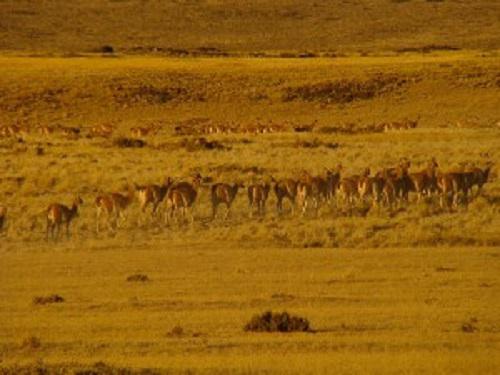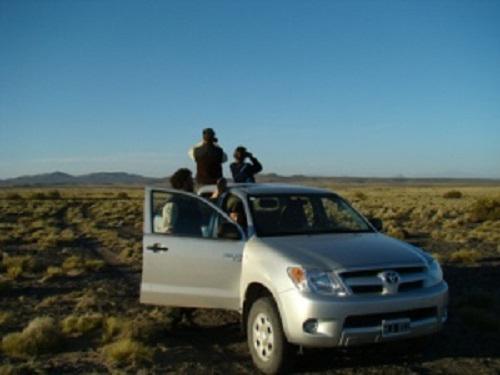Ramiro Jose Ovejero
Little is known about Stress in nature and their impacts in physiology, ecology and natural history on this wild South-American camelids. The main objective of this project is to evaluate the social and physiological effects of environmental and anthropogenic factors on wild guanacos.

The major threats to Patagonian wildlife and habitats are overgrazing by livestock and introduced species. Grazing has resulted in severe desertification of approximately 30% of the Patagonian steppe. In addition, oil exploration and drilling destroy large areas of habitat and create roads that provide increased access routes for illegal sport hunters of native wildlife.

Understanding patterns of biodiversity is one of the biggest goals for nature conservation. The rapid degradation of arid lands is seriously affecting the Monte Desert and the Patagonian steppe productivity and biodiversity, according to data from the beginning of 20th century. The South-American camelids (like guanacos) play an important role in structuring trophic webs. These dominant herbivores are an important source of food for predators; provide habitats for seed growth (facilitation processes), etc. There are few protected areas with guanacos, and most of those are too small to maintain large populations. The Payunia provincial reserve in Mendoza covers 4,000 km2 and harbours at least 15,000 guanacos. Guanaco populations in Payunia have been increasing by 2% per year for the last 20 years, therefore in this region since 2005 the rural settlers in collaboration with governmental wildlife management agencies, are harvesting wool from wild guanacos that are captured, sheared, and released.
We are working in this project, because little is known about the impact that this management has in population and individual parameters of wild guanacos and also we don’t know how environmental and social factors affect cortisol levels and how the animal responds to these stressors. The main objective of this project is to evaluate the social and physiological effects of environmental and anthropogenic factors on wild guanacos.
The specific one-year objectives are:
1) determine stress generated by seasonal variations in climate and food availability;
2) Compare levels of cortisol between age classes, genders and social structure;
3) Determine the effect of management on the cortisol levels;
4) generate recommendations to improve the guanaco management.
The field study involves monitoring faecal (non-invasive methods) cortisol (FC) levels in relation with environmental, social and management factors. Each sample was collected immediately after an animal’s defecation; date, time and identity of the donor animal were recorded. Then Freeze-dried samples are used to quantify the concentration of glucocorticoids, with cortisol radioimmunoassay kits (DSL-MP-DPC, Etc.)